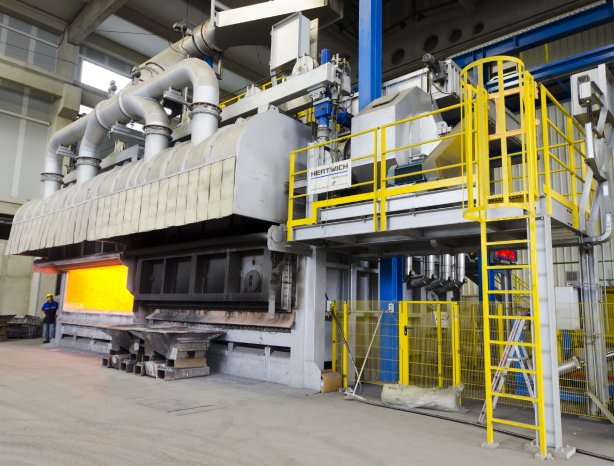By the acquisition of Sapa, Hydro has considerably expanded the scope, presence and innovative competitive edge of its extrusion division. As a globally leading extrusion plant, Hydro currently supplies more than 30,000 local and global customers in more than 40 countries around the world. In Belgium the company employs around 850 people in their extrusion facilities in Raeren and Lichtervelde and in the aluminum casthouse in Ghlin.
Hydro will increase the recycling capacity in Ghlin by 60,000 tons per year by adding a new Ecomelt-PS200 multi-chamber melting furnace from Hertwich Engineering. With this investment Hydro responses to the growing importance of scrap recycling, both manufacturing and turnaround scrap, within the extrusion industry. With aluminum starting to be intensively used in construction, transportation, industrial and other applications about five decades ago, we now see a corresponding rise in the amount of turnaround scrap. The aluminum industry benefits from this trend by an approx. 95 percent reduction of the energy demand in aluminum production. Hertwich Engineering, which has reached a worldwide leading position with their Ecomelt melting technology, can achieve even higher energy savings using suitable scrap.
The Ecomelt PS furnace to be installed in Ghlin is especially designed for medium to heavily contaminated scrap. The casthouse requires a broad spectrum of different types of scrap: vehicle license plates, wires, machining chips, cables, lithographic sheet, profiles, UBC, spray cans and others - partially loose in bulk, partially shredded, partially briquetted or packetized. The degree of contamination ranges from "clean" all the way up to heavily contaminated with paint and lacquers, rubber and plastic parts, oils, greases, etc. Furthermore, even solid scrap, such as sows, T-bars or ingot stacks are charged.
With this type of furnace the scrap flows through a vertically arranged preheat shaft, which is filled from above. The hot gases flow through the charged material in the shaft from bottom to top while the organic compounds are completely removed. The resulting pyrolysis gases are fed into the main chamber to support the gas heating. At the bottom end of the preheating shaft the decoated and preheated material is immersed in the flowing bath and is immediately melted. The melt flow between the furnace chambers is generated by electromagnetic liquid metal pumps.
The resulting pyrolysis gas volume when melting heavily contaminated scrap naturally reduces the demand for heating gas more than when melting relatively clean scrap. The energy consumption of this furnace type is between 300 and 550 kWh/ton, depending on the condition of the scrap. The remaining slag (dross) from the melting process is concentrated on the bath surface and must be removed. For this, Hertwich supplies a rail-guided skimming machine for safe, careful and fast cleaning of the furnace.
Due to this furnace concept, the energy content of the organic contamination is used efficiently, whereby operating costs are reduced markedly. Furthermore, the minimum emissions (NOx, VOC, CO, dioxins, no salt addition) contribute to a safe and environmentally friendly furnace operation – an aspect that has a high priority within the entire Hydro group.


